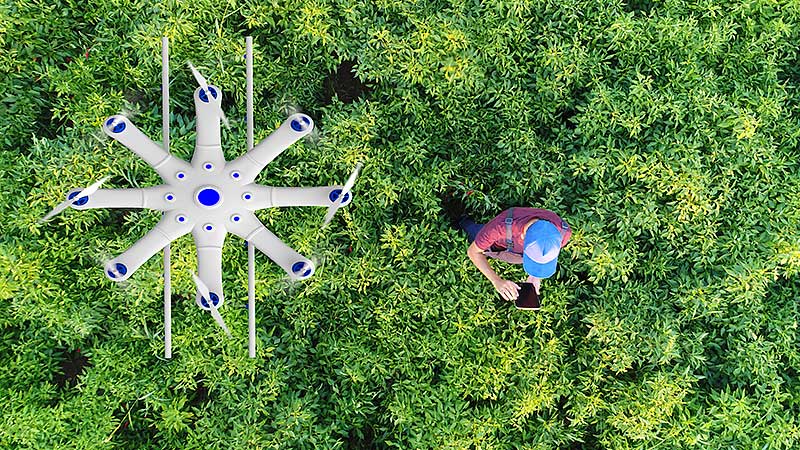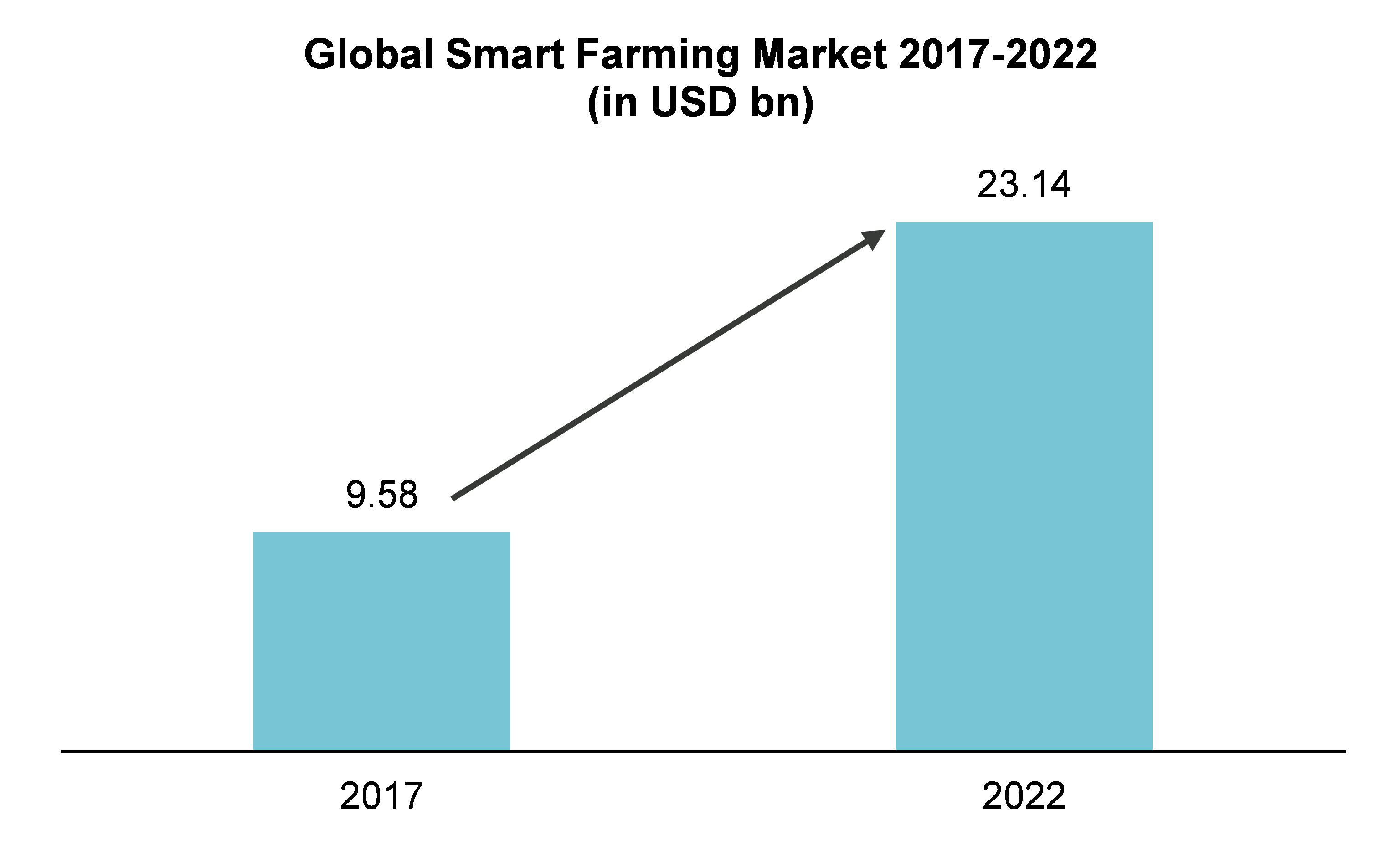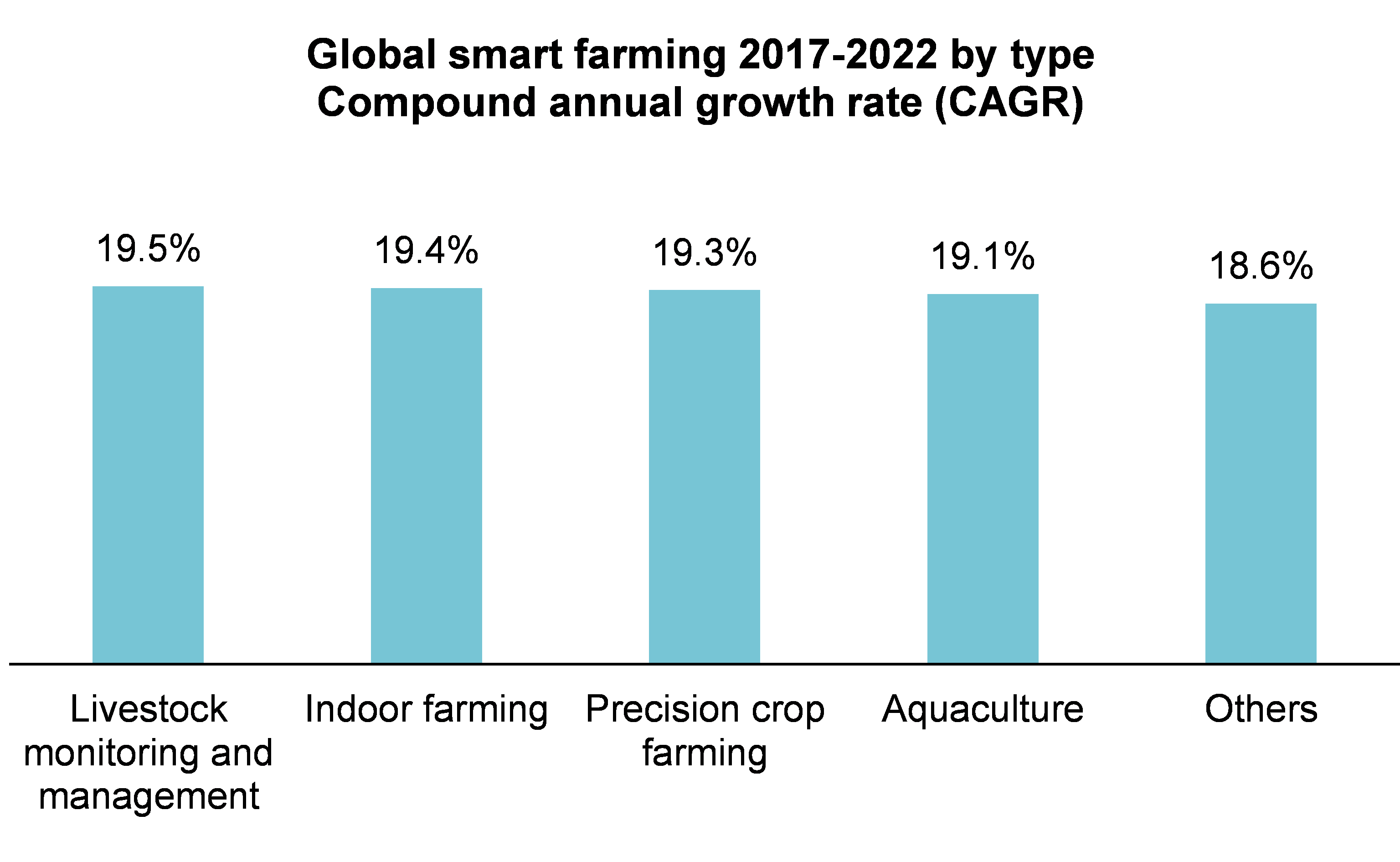Smart farming & food technology revolutionize the future of food
Originally published at 5/2/2018 by Dan Scott Reading time: 3 minute(s)
A combination of smart farming and the use of food technology is required to boost the agricultural output in order to meet the ever-increasing global demand for food.

This megatrend was first described in May 2018. As its impact on investors has gained relevance, the information and graphics were comprehensively updated and revised in December 2020.
The world population will increase to 9.7 billion people by 2050, according to estimates from the United Nations (UN), with global food production expected to grow by 70% to meet the additional demand that results.
The agriculture sector at the same time faces major constraints, such as the limited availability of arable land, the rising demand for fresh water and a slowdown in the growth of crop yields. The consequences of climate change, including more extreme weather conditions, are other challenges that farmers must deal with.
Use of intelligent farming methods and food technology is part of the solution.
The ongoing digitalization of agriculture has led to the adoption of more sophisticated techniques for growing crops and breeding animals. The increased consumption of non-meat-based protein, new eating trends, particularly in Asia, and the increased awareness of individual dietary requirements have all stirred up a great deal of food innovation.
WORTH READING IN THIS CONTEXT
The 5 pillars of the future of food
Of particular interest are:
- Digital agriculture (e.g. precision farming)
- Crop, plant and animal science
- Controlled-environment agriculture (CEA)
- Animal health and human welfare
- Enhancing the food supply chain (to reduce food waste)
To understand the actual impact each of the five pillars, it is necessary to understand their different objectives.
Global smart farming trend, an interesting investment opportunity
The global market for smart farming will reach just over USD 23 billion in 2022, which corresponds to a compound annual growth rate of 19.3% between 2017 and 2022, according to estimates by the market intelligence company BIS Research.
The sector’s fastest growing segments are:
- livestock monitoring
- management solutions
- and indoor farming (see graph 2 below)
Selected suppliers of innovative products and services in the smart farming ecosystem should thus benefit from the increasing demand for digitization.
In numbers
Graph 1: The global smart farming market annually grows by nearly 20% on average
Source: BIS Research (ID 720062), Statista
Compound annual growth rate (CA GR) of 19.3%.
Graph 2: Global smart farming growth between 2017–2022 broken down by segment
Source: BIS Research (ID 957386), Statista









